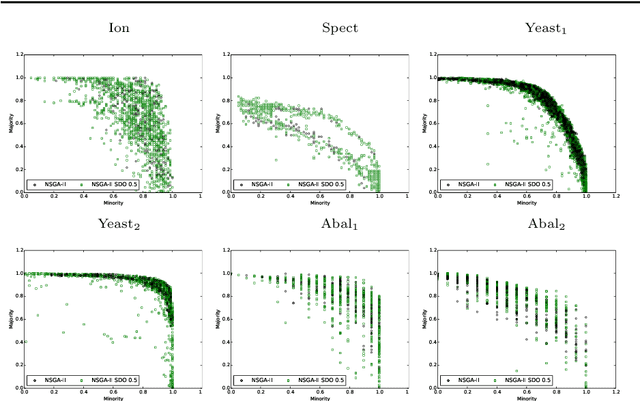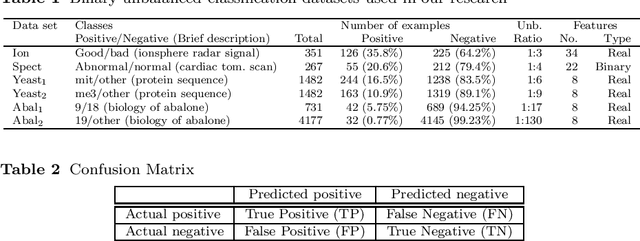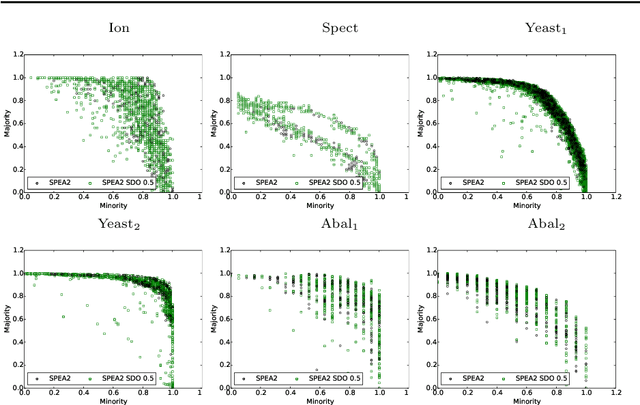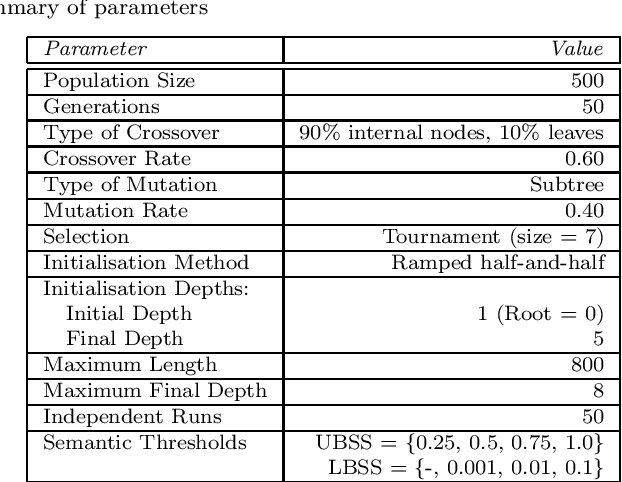Semantics in Multi-objective Genetic Programming
Paper and Code
May 06, 2021



Semantics has become a key topic of research in Genetic Programming (GP). Semantics refers to the outputs (behaviour) of a GP individual when this is run on a data set. The majority of works that focus on semantic diversity in single-objective GP indicates that it is highly beneficial in evolutionary search. Surprisingly, there is minuscule research conducted in semantics in Multi-objective GP (MOGP). In this work we make a leap beyond our understanding of semantics in MOGP and propose SDO: Semantic-based Distance as an additional criteriOn. This naturally encourages semantic diversity in MOGP. To do so, we find a pivot in the less dense region of the first Pareto front (most promising front). This is then used to compute a distance between the pivot and every individual in the population. The resulting distance is then used as an additional criterion to be optimised to favour semantic diversity. We also use two other semantic-based methods as baselines, called Semantic Similarity-based Crossover and Semantic-based Crowding Distance. Furthermore, we also use the NSGA-II and the SPEA2 for comparison too. We use highly unbalanced binary classification problems and consistently show how our proposed SDO approach produces more non-dominated solutions and better diversity, leading to better statistically significant results, using the hypervolume results as evaluation measure, compared to the rest of the other four methods.
 Add to Chrome
Add to Chrome Add to Firefox
Add to Firefox Add to Edge
Add to Edge